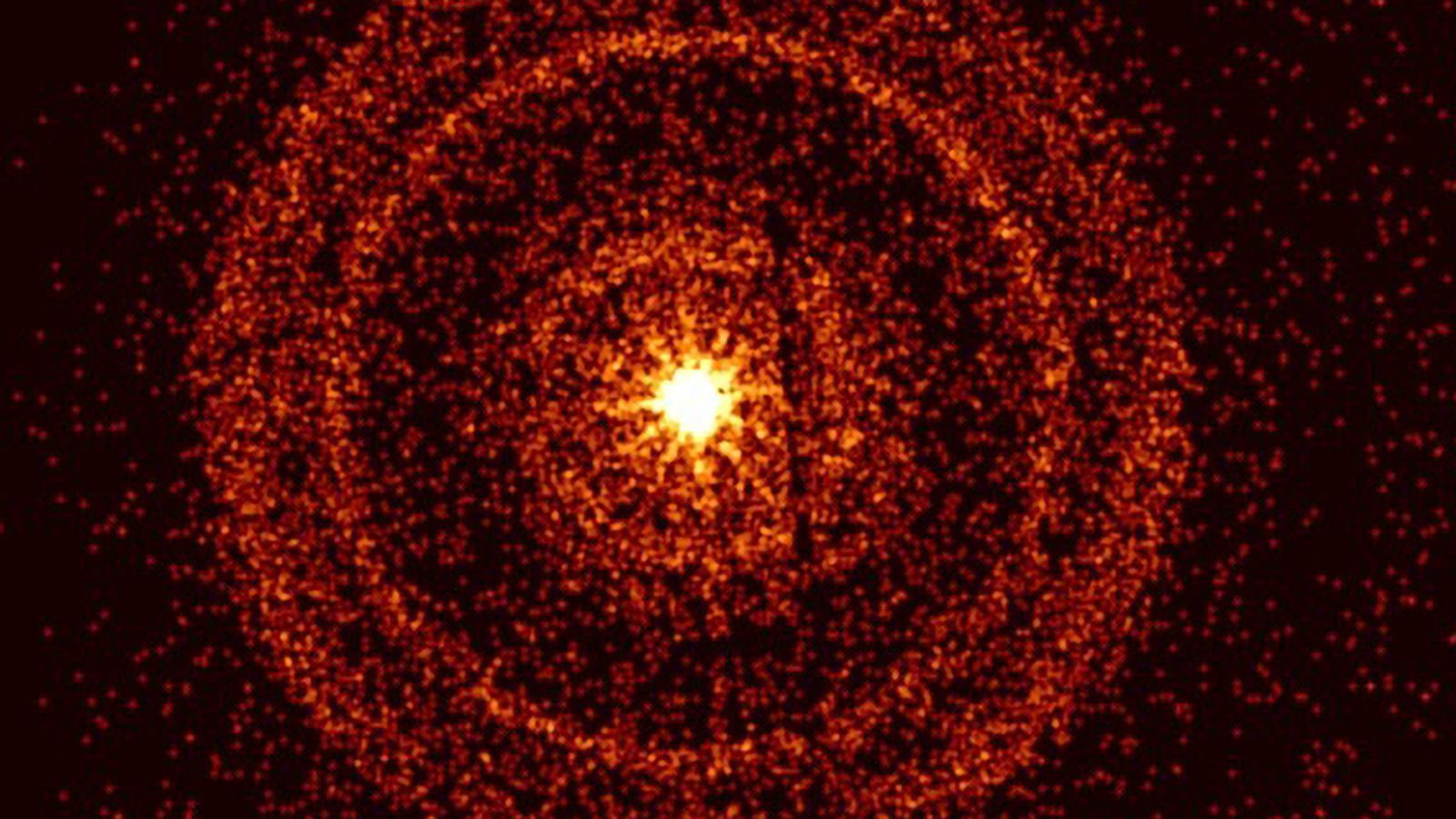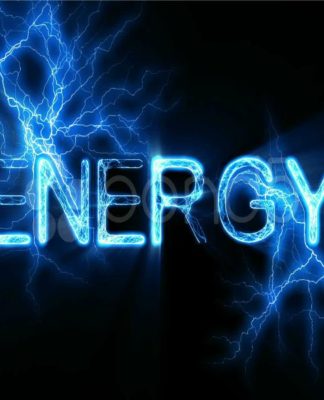Cosmic explosion may be brightest ever seen, astronomers say
The blast, which astronomers said was the brightest of all time since the beginning of human civilisation, occurred two billion light years from Earth in October and produced a pulse of intense radiation that swept through the solar system.
Tuesday 28 March 2023 23:24, UK
An image from Swift's X-Ray Telescope of the afterglow of GRB 221009A. Pic: Liverpool John Moores University
Image:
An image from Swift’s X-Ray telescope of the afterglow of GRB 221009A. Pic: Liverpool John Moores University
Why you can trust Sky News
A cosmic explosion that blinded space instruments may be the brightest ever seen, astronomers have said.
The blast, which occurred two billion light years from Earth in October, produced a pulse of intense radiation that swept through the solar system, triggering detectors on multiple spacecraft.
Scientists said the event was a gamma-ray burst (GRB), known for being some of the strongest and brightest explosions in the universe.
Astronomers said it was the brightest of all time since the beginning of human civilisation, blinding most gamma-ray instruments in space.
It meant researchers could not measure the real intensity of the emission and had to reconstruct its energy expenditure from past and present data.
An analysis of 7,000 GRBs suggests the event, dubbed GRB 221009A, was 70 times brighter than any yet seen and only occurs once every 10,000 years.
Dr Dan Perley, of the Astrophysics Research Institute at Liverpool John Moores University – who followed the event with the University’s Liverpool Telescope on the Spanish island of La Palma, said: “There is nothing in human experience that comes anywhere remotely close to such an outpouring of energy. Nothing.”
MORE ON SPACE
The rocket is made almost entirely of 3D-printed parts.
World’s first 3D-printed rocket makes launch debut – but fails to reach orbit
EMBARGOED TO 0001 FRIDAY MARCH 17 Undated handout photo issued by Rolls-Royce of a Space Colony. Rolls-Royce has received funding from the UK Space Agency to develop a nuclear reactor for a Moon base. The project will look into how nuclear power could be used to support a future base on the Moon for astronauts. Issue date: Friday March 17, 2023
Rolls-Royce gets funding for moon base nuclear reactor
CREDIT: Jack Cook/Woods Hole Oceanographic Institution
The dashed white line in this illustration shows the boundary between the inner solar system and outer solar system, with the asteroid belt positioned roughly in between Mars and Jupiter. A bubble near the top of the image shows water molecules attached to a rocky fragment, demonstrating the kind of object that could have carried water to Earth
Melted meteorites were thought to be a source of Earth’s water – a new study says otherwise
Related Topics:
Space
Though they last mere seconds GRBs produce as much energy as the sun will omit during its entire lifetime.
An illustration of the gamma-ray burst. Pic: European Space Agency
Image:
An illustration of the gamma-ray burst. Pic: European Space Agency
‘A phenomenal amount of energy’
Dr Perley said GRB 221009A produced “a phenomenal amount of energy”, adding: “It’s certainly the highest value ever recorded for a gamma-ray burst.”
The blast deposited around a gigawatt of power into Earth’s upper atmosphere, according to the European Space Agency (ESA), the equivalent of a power station’s energy output.
An artist's impression of a beam of intense radiation produced by a cosmic explosion. Pic: Liverpool John Moores University
Image:
An artist’s impression of a beam of intense radiation produced by a cosmic explosion. Pic: Liverpool John Moores University
Astronomers believe GRB 221009A was the result of a massive star collapsing in on itself to form a black hole.
Dr Perley said: “The star would have been many times more massive than the sun, probably 20 times as massive or more.”
Scientists recorded 20 dust rings, 19 of which are shown here. Pic: European Space Agency
Image:
Scientists recorded 20 dust rings, 19 of which are shown here. Pic: European Space Agency
GRB was much closer to Earth compared to others
GRB 221009A was thought to be so bright because it was much closer to Earth compared to other known GRBs and the beam of electromagnetic radiation happened to be pointing in the direction of the planet.
GRBs also produce a supernova but astronomers are yet to ascertain whether that happened in this case.
They are typically followed by a shockwave that emits lower energy radiation, known as an afterglow, that gradually fades over time.
The findings are reported in two separate papers in the Astrophysical Journal and Astrophysical Journal Letters.
Related Topics
Space






























